Stuart Forster, a native of North East England, looks at places to visit in Northumberland, England’s most northerly county.
Disclosure: Some of the links below and banners are affiliate links, meaning, at no additional cost to you, I will earn a commission if you click through and make a purchase.
Northumberland is peppered with castles that collectively stand as a legacy of the region’s dramatic history. A far more ancient monument, Hadrian’s Wall, built by the Roman Army, snakes across hilltops and through the rugged landscape of Northumberland National Park. For fans of the outdoors they are just some of the reasons why this is popular walking country.
Yet it’s a landscape that’s all too often overlooked by visitors to Britain. Rather than Hadrian’s Wall, it’s often Stonehenge, in Wiltshire, that travellers tend to prioritise if they have time to see just one ancient monument. For scenic countryside, it’s the Highlands of Scotland or hills of the Lake District that tourists often favour.
Northumberland is all too often bypassed purely because of its geographic location in England’s north. That means footpaths are not overrun and there’s room on the beaches on sunny days. The Northumberland Coastal Route is ideal for a scenic road trip and rarely snarled with traffic as it meanders 39 miles (62 kilometres) between Lindisfarne and Alnmouth.
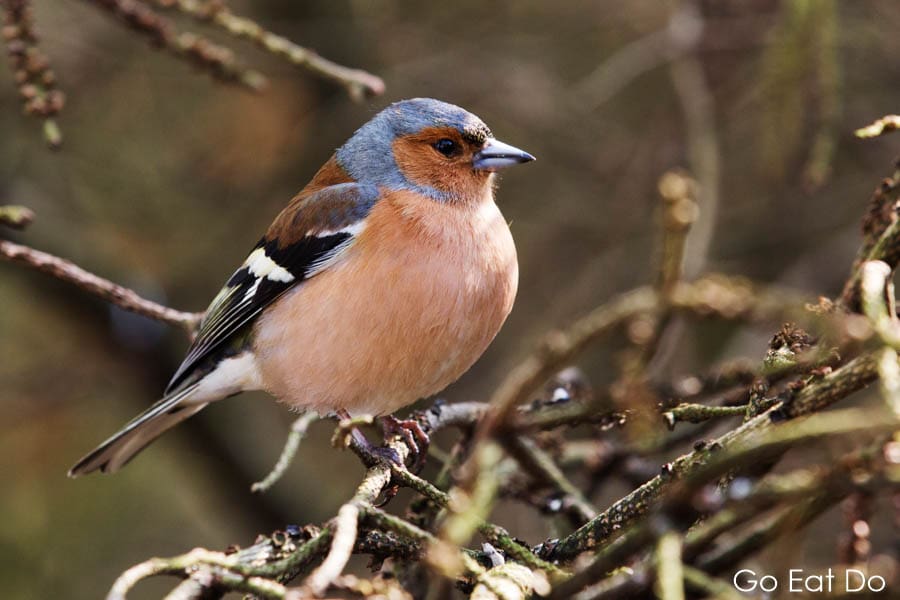
Walking on Hadrian’s Wall
Hadrian’s Wall was inscribed as a UNESCO World Heritage Site in 1987. Emperor Hadrian ordered the wall to be erected nearly 1,900 years ago as part of efforts to consolidate the frontiers of his vast territory. Some of the best-preserved sections run across the isolated countryside between Sycamore Gap and Housesteads Fort.
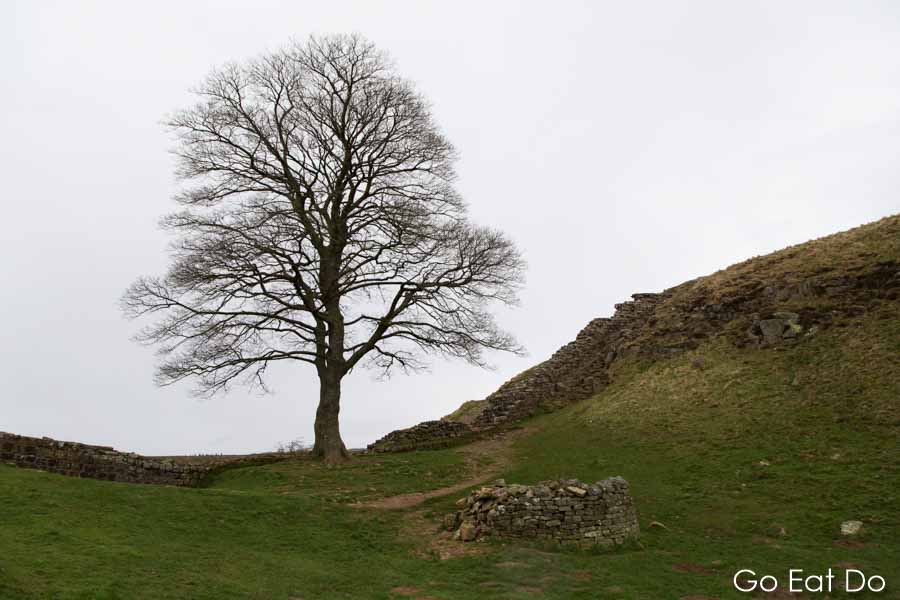
Over the intervening centuries, locals used the wall as a ready-made source of quarried stone. Many of the buildings in Corbridge and Hexham were built with material looted from the wall. During medieval times, when cross-border raiding was common, the stone was used to construct pele towers — some of which resemble castle keeps — into which people could retreat when raiders, known as reivers, launched violent assaults to rustle livestock and steal valuables. Their story is told in the museum at Hexham Old Gaol, which is said to be the oldest purpose-built prison in England. Examples of pele towers can still be seen at Cresswell and Corbridge.
The castles of Northumberland
Grander fortifications, including the castles standing at Dunstanburgh and Warkworth, are physical evidence of how the kings of England and Scotland long disputed this region. Warkworth Castle stands a couple of minutes’ walk uphill from the market cross where James Stuart, known as the Old Pretender, was proclaimed King James III of England in 1715, at the head of an invading Jacobite Army.
Alnwick Castle is the modern-day family home of the Dukes of Northumberland. Sculpted stone figures depicting medieval soldiers top the crenellated tower above the castle’s bailey. Many visitors recognise the castle from the films Harry Potter and the Philosopher’s Stone and Harry Potter and the Chamber of Secrets. It has been used by filmmakers as sets in numerous movies, as well as Brancaster Castle in special editions of the popular Downton Abbey television series.
It’s possible to spend a night at Langley Castle and wake up well-placed for walking along Hadrian’s Wall.
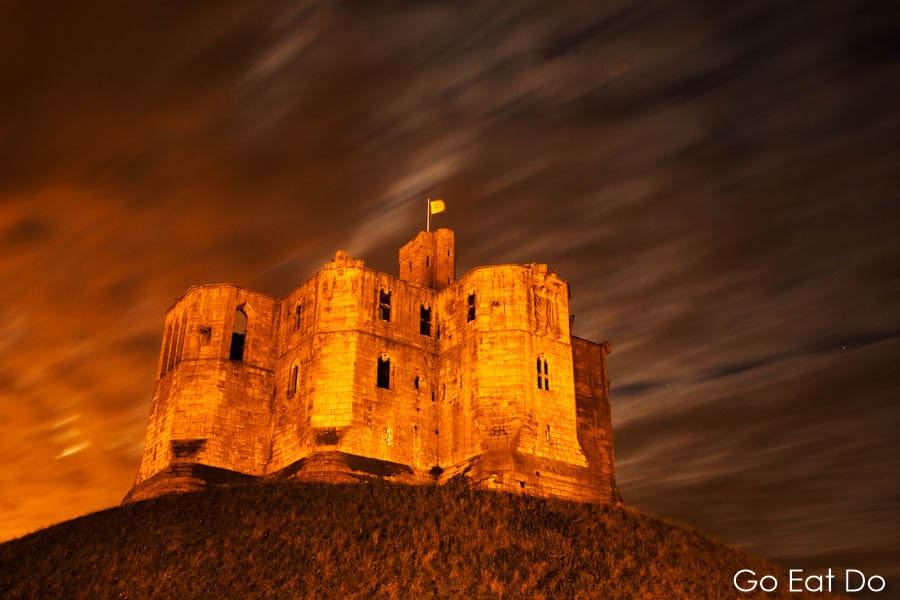
Visiting the Alnwick Garden
The Alnwick Garden, within easy walking distance of the castle, is one of the county’s most popular tourist attractions. In addition to seasonal blooms, it features a fairy tale trail, popular with children, and its centrepiece is a cascading fountain. Guided tours of the poison garden — which is guarded by locked, black wrought iron gates bearing a skull and crossbones — provide insights into the potentially deadly effects of plants such as tobacco, belladonna and hemlock. The garden’s tree house counts among the largest in the world and is the location of a popular café and restaurant.
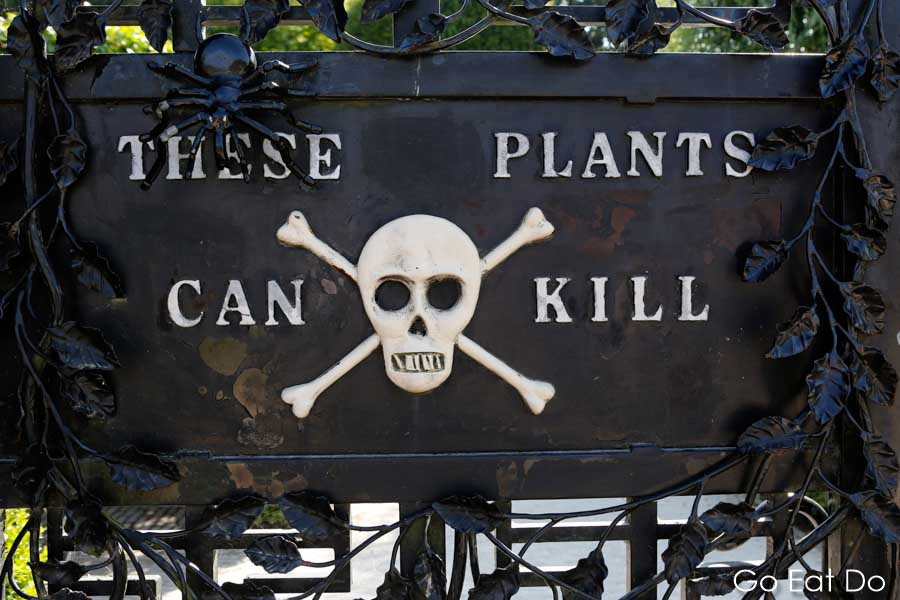
Books in Northumberland
The town’s former railway station is now the home to one of Britain’s biggest second-hand book stores, Barter Books, where it’s easy to spend hours browsing the shelves. A toy train whirs along tracks set above the books. A box of books bought by the shop in 2000 contained the red ‘Keep Calm and Carry On’ poster, bearing a crown, that was printed by the British government in 1939 for display in case of invasion by German forces during World War Two. That single poster spawned countless copies and has inspired hundreds of spin-offs, both in Britain and beyond.
Find out more about the market town in Go Eat Do’s post about top things to do in Alnwick, Northumberland.
Of course, so such poster existed at the time of the Norse invasions that set panic among the monks living on Lindisfarne and in the monasteries of the Kingdom of Northumbria, which were renowned as bastions of medieval scholarship. Monks working within them produced enduring illuminated manuscripts, including the Lindisfarne Gospels — the original is displayed at the British Library in London.
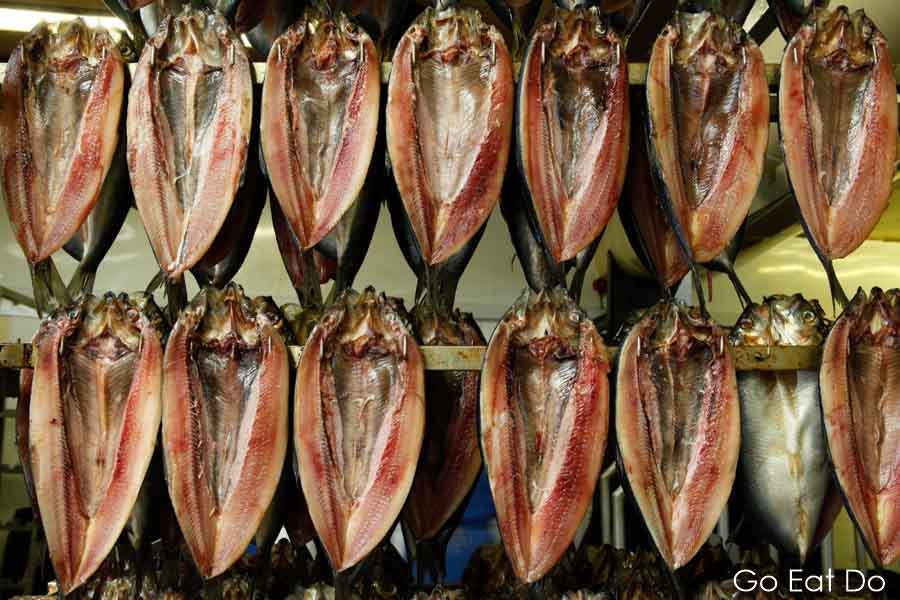
Lindisfarne and Berwick-upon-Tweed
Locals tend to refer to Lindisfarne as Holy Island. Providing that the tide is out, it can be reached by a causeway. Pockets of quicksand mean that deviating from the road should be avoided. In 1901 Edwin Luytens, who was later appointed as one of the architects of the governmental buildings in New Delhi, designed the residential quarters that now form a part of Lindisfarne Castle.
The walled town of Berwick-upon-Tweed, around 10km north of Lindisfarne, is home to England’s most northerly railway station. The local football club is the only one based in England to play in the Scottish League. A popular urban myth means many people believe that Berwick remained at war with Russia, following the Crimean War of the 1850s, into the 1960s. Falsely, it was said that Berwick had been named in the declaration of war but not the peace treaty. Long ago, it was explicitly named in such documents due to it frequently changing hands between Scotland and England.
Southwards of Lindisfarne lie the Farne Islands, which can be reached via boat tours departing from Seahouses. The largest of the islands was long home to the monk Cuthbert, who was canonised following his death and is now interred at Durham Cathedral. These days the remoteness of the islands ensures they provide sanctuary to colonies of seabirds, including more than 30,000 puffins, and in excess of 5,000 grey seals, who bask on the rocky shores between expeditions into the North Sea to catch fish.
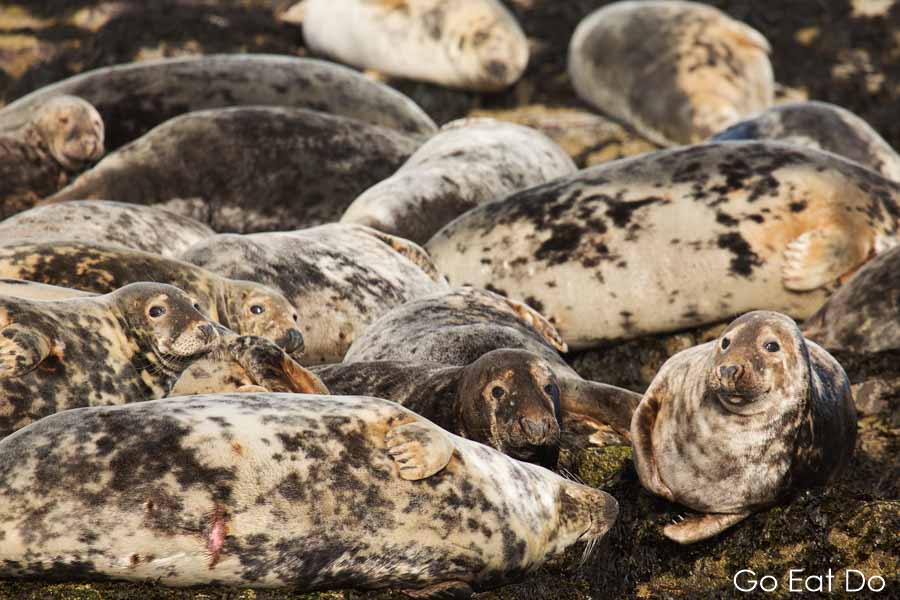
The wild cattle of Chillingham
Among the rarest of the wildlife inhabiting Northumberland is the herd of wild cattle roaming the grounds of Chillingham Castle. The white, short-horned creatures have existed in isolation for over seven centuries.
Red squirrels live in pockets of woodland throughout the county, including in Kielder Forest Park, by the shore of a man-made lake that was established as a reservoir during the 1970s. Roe deer and otters also find habitat in the area. Hides, dotted among the woodland, provide shelter for people to observe and photograph the wildlife.
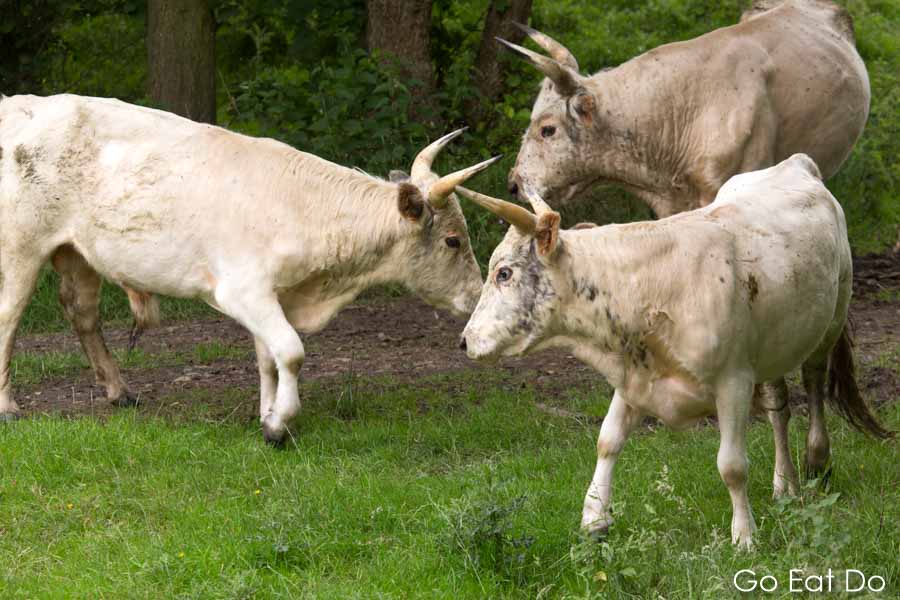
Kielder falls within Northumberland International Dark Sky Park, the largest in all of Europe. It holds gold tier status, the highest awarded by the International Dark Skies Association, meaning low levels of light pollution. That makes the park a popular destination with astronomers and astrophotographers keen to view and photograph the Milky Way and events such as the Perseid meteor shower that is visible in night skies until 24 August.
For other types of nightlife visitors to the region tend to head to Newcastle. But, after a long day of walking and fresh air out in Northumberland’s countryside, only the hardiest of souls have the energy to keep dancing into the small hours.
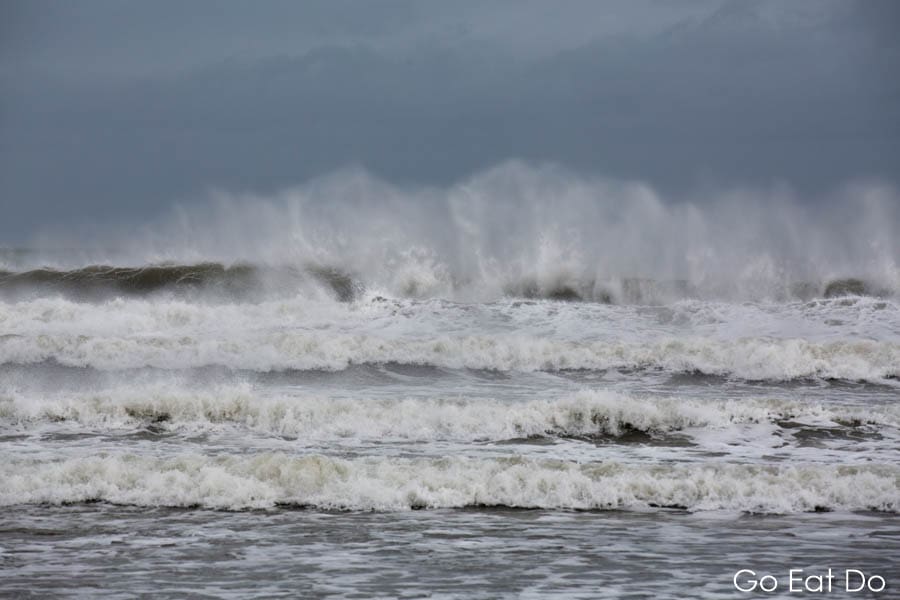
Northumberlandia: The Lady of the North
In 2012 the world’s largest landform sculpture opened in Northumberland. Located near Cramlington, Northumberlandia was designed by Charles Jencks.
The sculpture depicts a woman lying back and looking toward the sky. For that reason, it’s known as ‘The Lady of the North’.
Featuring approximately four miles of footpaths, Northumberlandia is set in a park and has onsite parking. It’s a remarkable landmark and an option if you’re looking for easy circular walks in Northumberland or family days out in North East England.
The video below provides an overview of what to expect at Northumerlandia:
How to get to Northumberland
Where is Northumberland? The map of Northumberland below shows the county’s location, just south of the England-Scotland border:
Newcastle International Airport is the region’s largest passenger airport.
Several trains running on the East Coast Main Line between London and Edinburgh stop at Berwick-upon-Tweed, Alnmouth and Newcastle upon Tyne.
DFDS Ferries operating between Amsterdam and Newcastle dock at the Port of Tyne.
Accommodation in Northumberland
Planning a UK staycation or holiday in North East England? Northumberland cottages are ideal for an extended stay in England’s most northerly county.
Search for hotels in Northumberland via Booking.com:
Books about Northumberland
Planning a trip to Northumberland? You may find the following books about Northumberland useful:
Enjoy slow travel? Find information on things to do and see in the county in the Bradt Guide to Northumberland:

Steve Ellwood is the author of 50 Gems of Northumberland: The History and Heritage of the Most Iconic Places:

Into photography? You may enjoy Anita Nicholson’s Photographing Northumberland: A Guide to the Most Beautiful Places to Visit:

Enjoy walking? 36 walks in the county are detailed in the Cicerone’s Walking in Northumberland:

Pathfinder Guides’ describes outstanding circular walks in its book Northumberland and Scottish Borders:

Places to visit in Northumberland
If you have suggestions about other attractions and reasons to visit Northumberland, you’re welcome to leave a suggestion in the comments below.
Further information
Discover more about the county at the Visit Northumberland website. The Visit England website also has ideas relating to travel and things to do in Northumberland.
Stuart Forster, the author of this post, is an award-winning travel writer based in North East England. His work has been published by Love Exploring, The Independent and The Mail on Sunday.
Thank you for reading about England’s most northerly county in this post about places to visit in Northumberland, You may want to read this article suggesting walking Hadrian’s Wall in Northumberland.
Photos illustrating this post are by North East England-based Why Eye Photography.
If you enjoyed this post why not sign up for the free Go Eat Do newsletter? It’s a hassle-free way of getting links to posts on a monthly basis.
‘Like’ the Go Eat Do Facebook page to see more photos and content.
A version of this post was published on Go Eat Do on 3 September 2017.
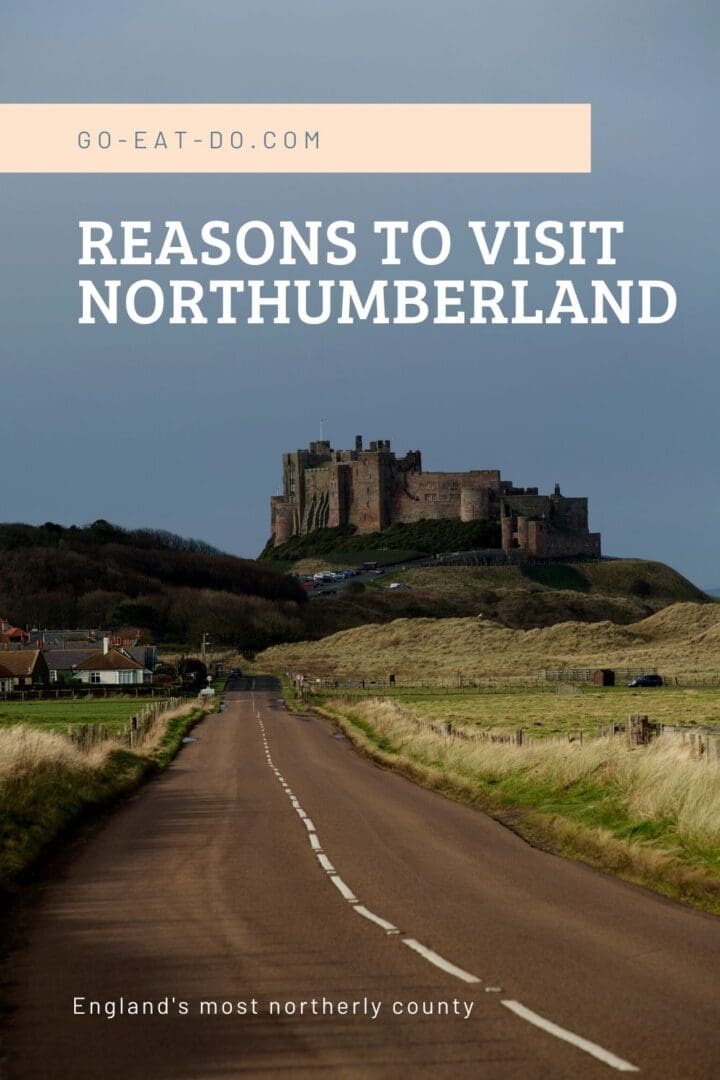



Andrew
September 4, 2017 at 18:20You forget to mention another castle in Northumberland- Bamburgh Castle and its history!!
Stuart Forster
September 7, 2017 at 18:41Hello Andrew, Northumberland has quite a few impressive landmarks and fortresses that I could have written about in addition to those mentioned. As you’ll note, Bamburgh Castle features on the headline photograph for this post, so wasn’t forgotten. Hopefully I’ll write more about the county’s attractions in the future, so can focus on it down the line.
Alison
September 10, 2017 at 17:19Lovely photos. Northumberland has so much to discover. I have a list that is really long of places I want to visit. Chillingham is on the list, went years ago and would love to go back
Stuart Forster
September 11, 2017 at 15:56Thank you. It’s a very photogenic landscape.
Cherie
September 11, 2017 at 21:59There is so much to discover in Northumberland. I have had many holidays there over the years and discover something new each time I visit. It feels like home to me.
Stuart Forster
September 12, 2017 at 08:03I agree. Even as a local there are impressive trails to be followed and landscapes that can be revisited throughout the year, making a different impression each time.
Agness of eTramping
September 16, 2017 at 12:11Northumberland seems so picturesque, Stuart! How many days would you recommend staying there?
Stuart Forster
September 11, 2019 at 13:18The longer the better, Agness. You could easily spend a two week holiday in the region.
Jules
September 22, 2017 at 18:08Funnily enough this is the second time I’ve stumbled on Northumberland (virtually!) today… it must be a sign that I need to take my family there! You certainly make it appealing!
Stuart Forster
September 24, 2017 at 18:22Hello Jules, There’s a stack of family-friendly activities to undertake in Northumberland. Alnwick Castle is a popular destination and a boat trip to the Farne Islands may also appeal to youngsters interested in wildlife.
Allison Pritchard
November 12, 2022 at 22:02Hello. I am thinking of visiting in Dec. Where would you suggest as a good base if intending to travel around via public transport please?
Go Eat Do
November 15, 2022 at 19:29If you are going to use buses, Alnwick or nearby Alnmouth are decent options. Alnmouth railway station has connections with major stations. For the north of the county, Berwick is a decent base.